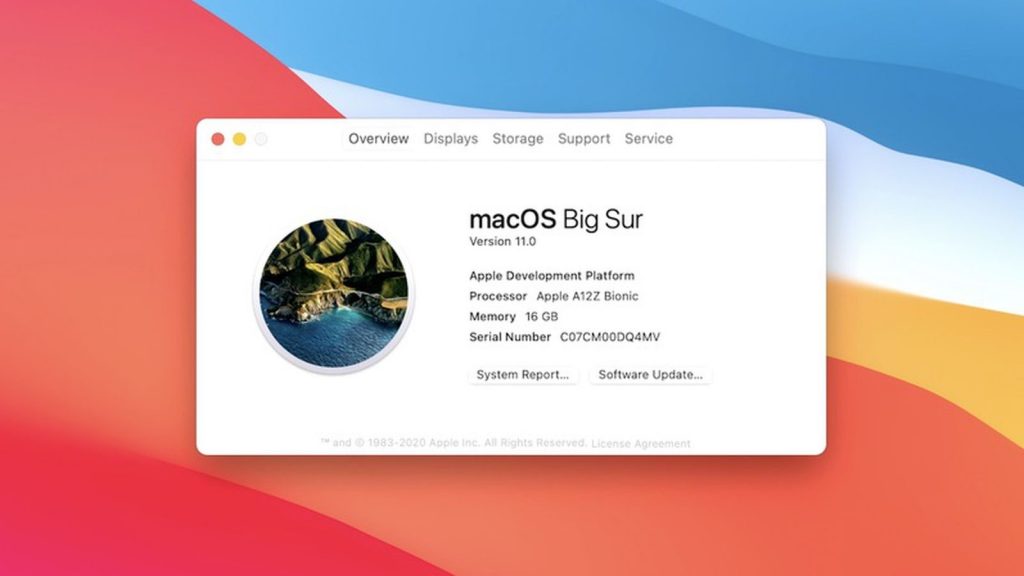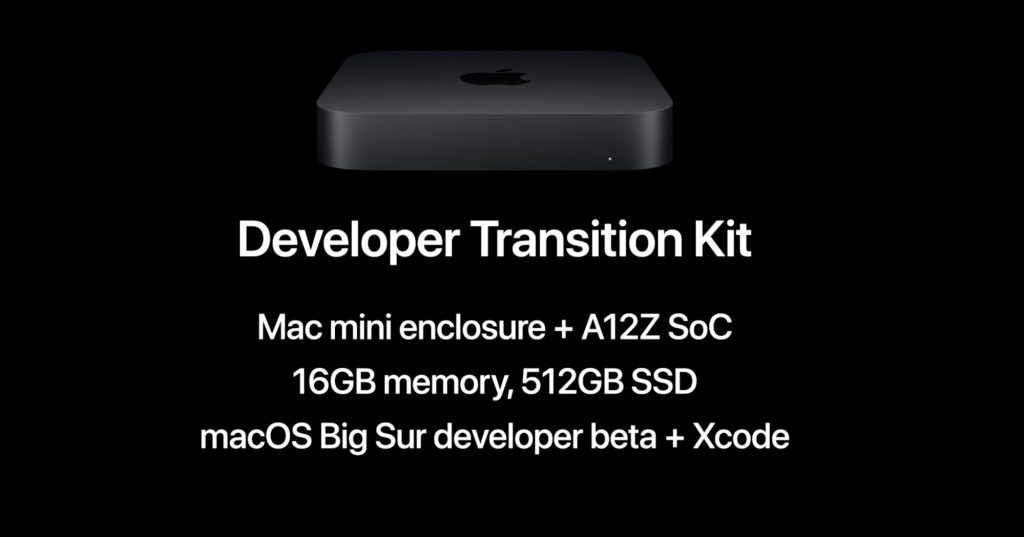
Details don’t seem to be anywhere near as complete as I’d like them for now, but the long speculated move to ARM has finally begun. Interestingly enough, it’s the end of OS X 10.x as now we have version 11, currently named macOS Big Sur:

I guess the more interesting thing will be the emulation in the new Rosetta2, if this is actual emulation or is this going to be relying on LLVM’s intermediary byte-code, allowing a user experience more akin to Java.
With the move to ARM, this will spell the end of the Hackintoshes. Which is a shame, as the best way to experience OS X, most certainly has been on non Apple hardware. I guess time will tell regarding the adoption of the desktops, but as always since the introduction of the Apple Store & Apps, computers have accounted for a negligible fraction of Apple’s sales. Even sales of iPads surpass those of all the computers combined.

The upcoming transition kit will be a Mac mini sporting the A12Z SoC, 16GB of memory and a 512GB SSD. This is the same processor in the current iPad Pro.
The Transition Kit is $500 USD, however it’s invite only. You can try your luck here at:
https://developer.apple.com/programs/universal/

Naturally I was denied the opportunity to give them $500.
I suppose as time goes on more and more details will become available. I’m sure there will be a race to get Qemu to run Big Sur, although Im sure the retail product will be signed and encrypted, and Apple will consolify their ecosystem.
On the gaming side, however being able to run iOS apps on the desktop means that the Mac is now a serious gaming contender for the casual market. Can apple bridge the Candy Crush gap where Microsoft failed with RT?

I think only paying members ($99/year) of the developer program are eligible to apply. But even after paying the $99 it is probably not guaranteed that you can order a developer transition kit.
Back in 2005, you could simply buy the intel board the x86 DTK was based on and a P4 CPU and run a copy of OS X 10.4.1 for intel. Hackintosh before the real thing ;-).
Rosetta 2 will definitely be interesting. The presentation at the keynote implies (IMHO) that it is a static binary translator from x86-64 to Aarch64. However, this will cause problems for binaries using calculated jump targets (the so-called “code discovery” problem – at which address does an x86 opcode start?), so there is probably some sort of fallback or hybrid static/dynamic translation involved.
I think they basically said that it’s a hybrid approach that can fall back to JIT, because they said this was there to support web browsers. ie., you’ll have x86-64 browser that is dynamically compiling JS to x86-64 instructions, and Rosetta 2 that is dynamically recompiling that to ARM.
Big Sur still refers to itself as Version 10.16 in some places, so 11.0 in ATM is just cosmetic at this point. Under the hood it’s Darwin 20.
I don’t get how so many people are proclaiming the ‘version 11’ being a clean break, when it’s still more of the same.
Obviously it’s still more Darwin, although now it’s without 32bit, no Carbon, no OpenGL it just feels like an empty husk to me.
But I’m sitting here on my trashcan/cylinder enjoying Mojave.
Catalina is the last to support legacy kexts, but other than that its a clean break from anything “legacy” in OS X. The “move” to ARM won’t be painful since they already trashed a decade of software a year ago.
I got a 2012 Macbook Air here triple booting Mojave, Catalina, and Windows 10 2004. The irony is this fully 64-bit UEFI machine can’t even boot Windows 10 properly in UEFI mode (video breaks when a driver is installed).
Restoring this thing to factory was a retro flashback though, came with 10.8 Mountain Lion! Old enough to still have vestiges of PPC era OS X that I used so much back in the day.
I coaxed Snow Leopard onto my 2011 MacBook Air. Apart from the graphics being a bit funky after booting and waking from sleep (but eventually it sorts itself out), it works fine. Now that’s a blast from the past, with Rosetta still there and no traces of iOSification whatsoever. And of course it flies.
No doubt about it, SL is one of the greats~!
I also love 10.2.7 for the G5, with a SSD. It’s wicked fast!
I’ve had to lay my hands on a G5, but I’d expect it to be nothing short of a screamer with Jag 🙂
I think instead of hackintosh there will be Raspitosh? Raspberryintosh? Or something like that.
Lumiatosh (950 anyone?)
Pinetosh
🙂
And to think the II was 6502 all the way!
Hopefully they won’t lock the Mac Desktops/Laptops down like they do with iOS. I started thinking about Boxedwine on Mac/ARM machines and would hate to spend any time on it if it won’t be allowed. Recently I have started putting together simple dynamic recompilers for ARMv7 and ARMv8. I still have lots of work to do, but Boxedwine on a Raspberry Pi 4 can now run x86 games/apps like a 486 computer.
I have a feeling it’s only a matter of time before that happens.